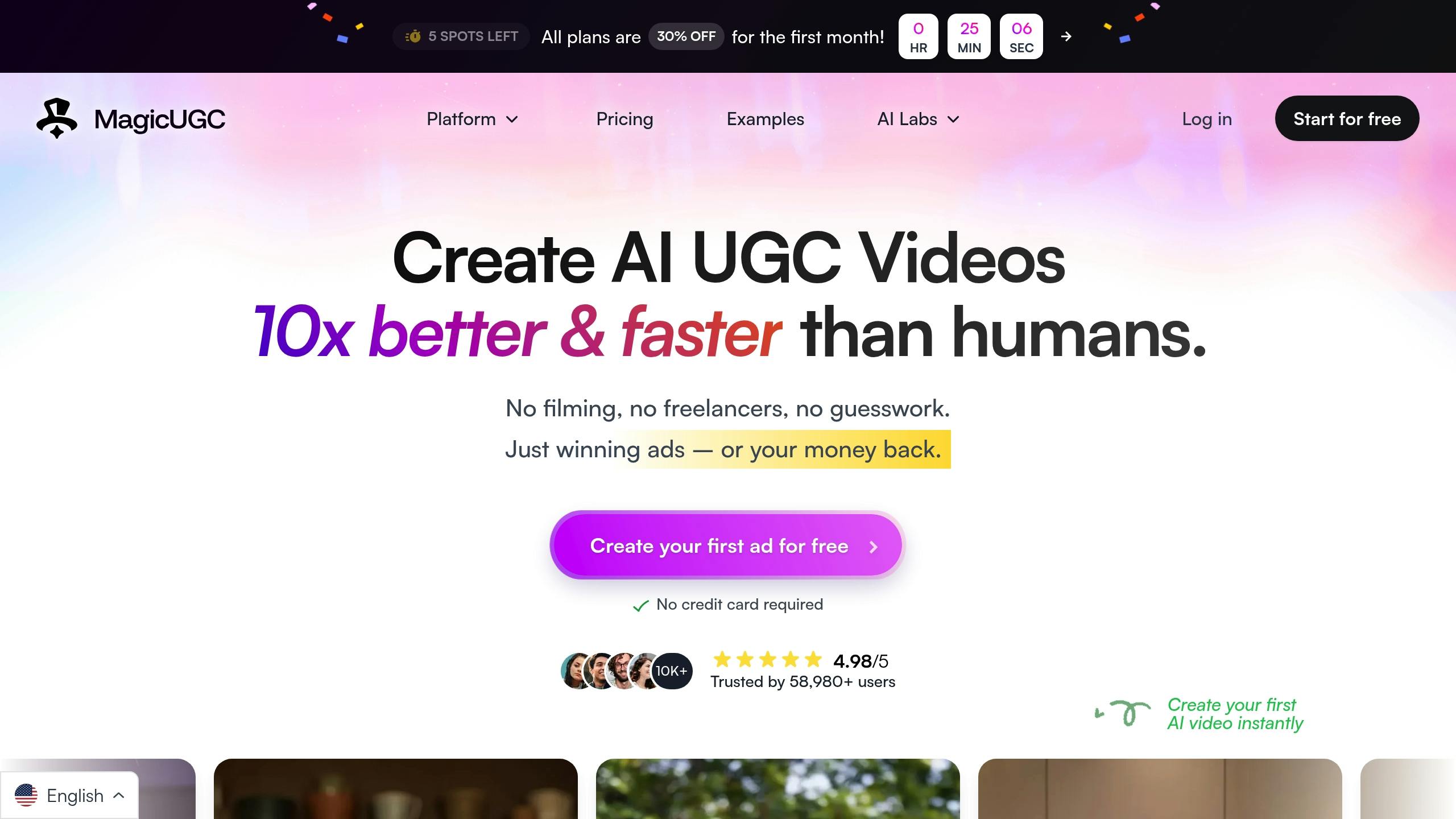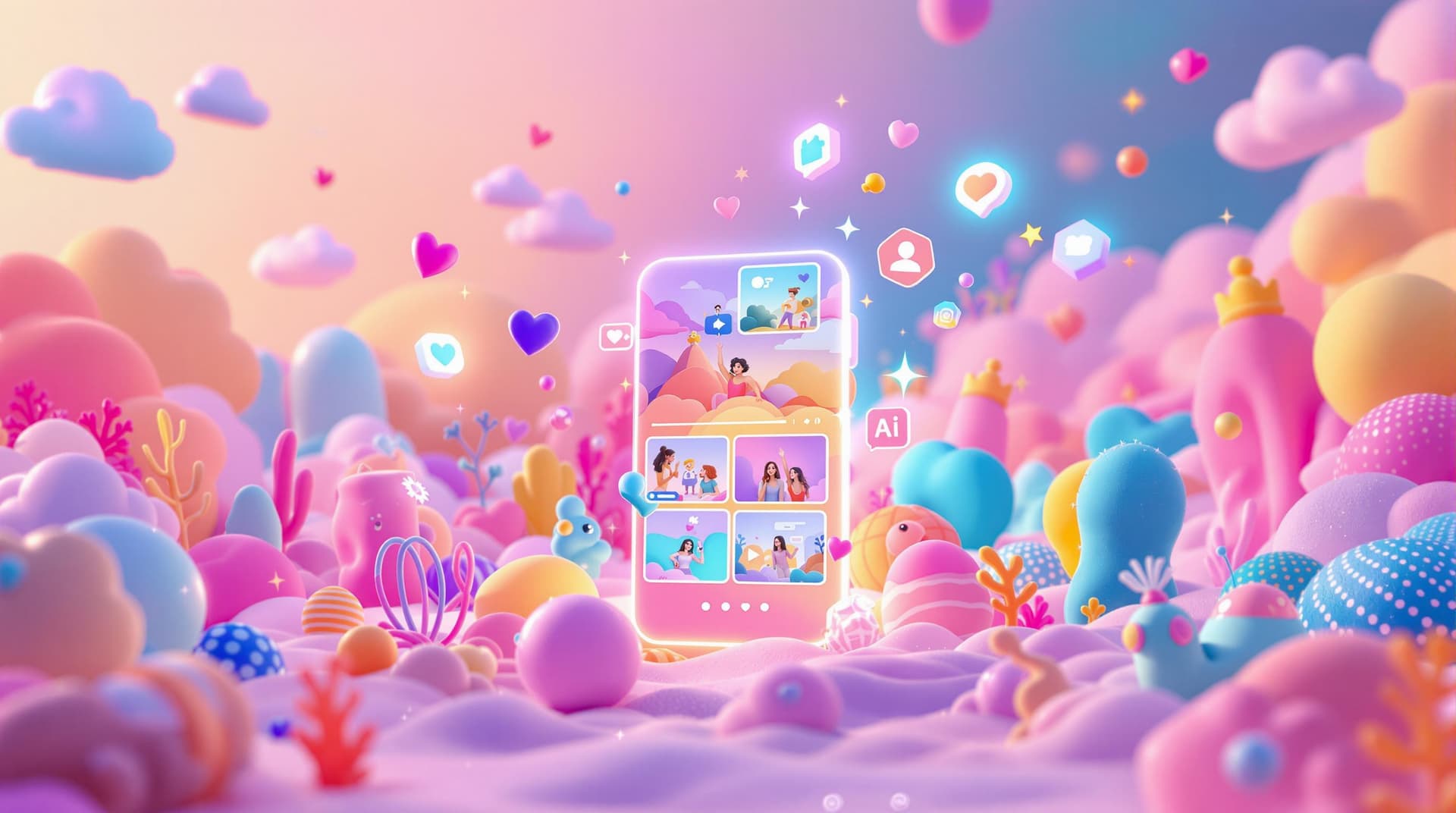![UGC vs. Influencers: Which Marketing Is Best for You in 2025? [COMPARISON]](/_next/image?url=https%3A%2F%2Fwww.magicugc.com%2Fblog-images%2Fassets.seobotai.com%2Fmagicugc.com%2F67b2ee7771dd53536954ee08-1739785037906.jpg&w=1920&q=75)
Trying to decide between UGC (User-Generated Content) and influencer marketing for your 2025 strategy? Here’s the quick answer:
- UGC is budget-friendly, builds trust, and drives engagement with an ROI of $6.50 per $1 spent. Best for brands focused on community and long-term growth.
- Influencer Marketing offers precise audience targeting and rapid exposure, with nano-influencers delivering high engagement at lower costs. Ideal for product launches and aspirational brands.
Quick Comparison
| Metric | UGC | Influencer Marketing |
|---|---|---|
| ROI | $6.50 per $1 spent | $5.78 per $1 spent |
| Engagement Rate | 28% | 5.7% |
| Cost | Minimal to none | $100–$1M+ per post |
| Trust Factor | 80% consumer trust | 69% trust influencer posts |
| Best For | Building trust, community | Rapid exposure, niche targeting |
Bottom line: Choose UGC for authenticity and cost-efficiency. Opt for influencer marketing for targeted reach and quick results. Or combine both for a balanced strategy.
UGC vs Influencer Marketing: Main Differences
Cost and Performance Comparison
UGC ads are far more budget-friendly, costing about half as much as traditional ads, while achieving 4x higher click-through rates (CTR). Here's how UGC and influencer marketing stack up in key metrics:
| Metric | UGC | Influencer Marketing |
|---|---|---|
| ROI | $6.50 per $1 spent | $5.78 per $1 spent |
| Engagement Rate | 28% | 5.7% |
| Content Creation Cost | Minimal to none | $100-$1M+ per post |
| Trust Factor | 80% consumer trust | 69% trust recommendations |
| Conversion Impact | 29% higher web conversions | Varies by campaign |
These numbers show UGC’s potential for higher returns and better engagement. But the choice isn’t just about metrics - it’s also about the strengths and challenges of each approach.
Strengths and Limitations
Both UGC and influencer marketing bring distinct benefits and hurdles. Let’s break it down:
UGC Strengths:
- Builds a sense of community around your brand.
- Offers ongoing content creation without heavy investment.
- Encourages authentic engagement with campaigns.
UGC Limitations:
- Quality control can be tricky with user-generated content.
- Legal and rights management for content usage can get complicated.
- Content consistency and volume may fluctuate.
- Messaging control is limited.
Influencer Marketing Strengths:
- Provides direct access to niche, engaged audiences.
- Delivers polished, professional-grade content.
- Leverages influencers’ expertise on platform-specific strategies.
- Offers organized and structured campaign execution.
Influencer Marketing Limitations:
- Fraud remains a challenge - 49% of influencers have been linked to deceptive practices.
- Costs can skyrocket, especially with high-profile influencers.
- Audiences are becoming weary of overly promotional posts.
- Measuring ROI can be a complex process.
Deciding between UGC and influencer marketing depends on your business goals. UGC is ideal for e-commerce brands needing relatable, visual content, while influencer marketing often works better for premium or luxury brands. Each approach has its place, depending on your strategy.
Results and Numbers: UGC vs Influencers
Sales and Return on Investment
The numbers tell a clear story:
90% of consumers prefer user-generated content (UGC) over branded emails or search ads when deciding what to buy. This shift reflects growing trust in peer recommendations. On the other hand, influencer campaigns deliver 11x the ROI of traditional digital marketing, though success often depends on precise audience targeting.
Social Media Performance
When it comes to social media, both strategies shine in different ways. Here's how they compare:
| Performance Metric | UGC | Influencer Marketing |
|---|---|---|
| Click-Through Rate (CTR) | 4x higher | 11x higher ROI compared to traditional methods |
| Cost Efficiency | 50% lower CPC | Varies depending on influencer tier |
Production Speed and Costs
The way content is created differs greatly between these approaches. UGC relies on contributions from customers, making it quicker and less resource-intensive. Influencer marketing, however, involves managing partnerships, which can take more time and coordination.
UGC stands out with:
- Lower production costs
- Faster approval cycles
- A steady stream of content from engaged customers
These trends highlight the strengths of each method and help guide strategic decisions. Next, we'll dive into scenarios where one approach may work better than the other. The question remains: should you lean on organic customer input or the reach of influencers to hit your 2025 goals?
Related video from YouTube
sbb-itb-d822133
Choosing Between UGC and Influencers
Deciding between UGC (User-Generated Content) and influencer marketing comes down to your business goals, resources, and specific needs. Here’s a closer look at when each option works best.
When to Use UGC
UGC shines in campaigns that focus on building trust and authenticity. It’s especially effective for:
Community-Focused Brands
Brands that thrive on peer validation - like DTC companies or local services - often see great results with UGC.
Cost-Effective Marketing
If you’re working with a tight budget, UGC can deliver strong engagement without breaking the bank. It’s a great fit for:
- Small businesses
- Startups
- E-commerce brands
- Local services
When to Use Influencer Marketing
Influencer marketing is ideal for campaigns that need rapid exposure or precise audience targeting. It works particularly well in these scenarios:
Launching Products or Building Awareness
This approach is perfect for:
- Introducing new products
- Expanding into new markets
- Promoting luxury or aspirational items
Reaching Specific Audiences
| Influencer Type | Best Use Case |
|---|---|
| Nano-influencers | Niche markets, local reach |
| Mega-influencers | Broad, mass awareness |
Explaining Complex Products
If your product requires detailed explanations or visual demonstrations, influencers can break it down effectively. Their endorsements can also lend credibility to your brand.
When deciding between UGC and influencer marketing, think about your timeline and resources. UGC fosters long-term trust and community engagement, while influencer campaigns can create immediate buzz. Many brands now combine the two, using hybrid strategies and AI tools to get the best of both worlds. For tips on blending these approaches, check out the next section on AI-powered integration strategies.
Using AI to Combine UGC and Influencers
For brands looking to balance genuine appeal with broad reach, AI makes it possible to merge the spontaneity of user-generated content (UGC) with the polished style of influencer campaigns. This approach tackles the challenges of both strategies: UGC can feel unrefined, while influencer content sometimes seems overly curated. AI tools help integrate the two for a more effective solution.
AI Tools for Content Creation
MagicUGC offers tools designed to streamline this hybrid strategy:
Advanced Content Generation
- AI-driven video creation, trained on over 1 million high-performing social media posts.
- Customization options to tailor content for specific audience demographics.
Performance Optimization
MagicUGC’s platform ensures better cross-channel performance. Research from Stackla shows that AI-generated UGC-style content can deliver engagement rates 8.7 times higher than traditional branded content .
MagicUGC Turbo Plan Features

The Turbo Plan, priced at $249/month, includes:
| Feature | Benefit |
|---|---|
| 10 AI Avatars | Provides diverse creator styles |
| Performance Analytics | Enables real-time optimization |
Real-World Application
This method has already shown success. For instance, L'Oréal used AI to blend user selfies with influencer-quality visuals, creating a seamless mix of authenticity and professional appeal .
Best Practices for Implementation
- Be transparent about AI involvement - 82% of consumers trust content when AI usage is disclosed .
- Leverage AI analytics to refine and improve content performance.
- Combine AI-generated materials with genuine influencer collaborations for a balanced approach.
Conclusion: Making Your Final Choice
Key Takeaways
User-Generated Content (UGC) shines in campaigns where authenticity is the priority, influencing 79% of purchase decisions . On the other hand, influencer marketing is ideal for reaching a large audience quickly. The cost structures also differ: UGC often needs less upfront spending, while influencer marketing typically requires a bigger budget but can achieve faster results for targeted goals.
How to Decide: A Quick Guide
Use this table to help decide which strategy fits your brand's needs:
| Decision Factor | Go with UGC if... | Opt for Influencer Marketing if... |
|---|---|---|
| Budget | You have limited funds | You can allocate a larger budget |
| Timeline | You're aiming for steady, long-term growth | You need fast, immediate results |
| Product Type | Your product thrives on community engagement | Your product is niche or aspirational |
Tips for Success
If You Choose UGC:
- Build strong, genuine relationships with your customers.
- Track engagement and conversion metrics closely.
- Use AI tools to refine and analyze content.
- Stay updated with real-time performance analytics.
If You Choose Influencer Marketing:
- Pick influencers whose audience matches your target market.
- Measure ROI using specific campaign tracking tools.
- Ensure your brand voice stays consistent across collaborations.
- Use AI platforms to find the right influencers for your campaigns.
For brands looking to maximize their impact, consider blending both approaches. Section 5's L'Oréal case study illustrates how combining UGC and influencer marketing can help brands stay connected with their audience while benefiting from high-quality professional content. For detailed hybrid strategies and actionable steps, revisit the examples and methods outlined in Section 5.
FAQs
What is the difference between influencer marketing and UGC?
The main difference lies in who creates the content and how it's managed. Influencer marketing involves working with people who have large followings to promote products or services through paid content. On the other hand, UGC (user-generated content) is created naturally by customers without any formal agreements.
Here's a quick breakdown of the differences:
| Aspect | Influencer Marketing | UGC |
|---|---|---|
| Control | High, through contracts or agreements | Limited |
| Content Style | Polished and professional | More natural and unfiltered |
| Audience Reach | Broader, targeted campaigns | Focused on community sharing |
Is influencer content considered UGC?
No, influencer content is not usually classified as UGC. Here’s why:
- Intent and Payment: Influencers create content as part of paid agreements, while UGC comes from customers who share their experiences voluntarily.
- Ownership: Influencer content is often governed by contracts, whereas UGC allows creators to maintain creative independence.
- Audience Trust: UGC is often seen as more genuine compared to sponsored influencer posts.
That said, many brands use both strategies. UGC builds trust and relatability, while influencers help brands reach specific audiences. Some companies even use AI tools to blend these approaches effectively, as discussed in Section 5.



![UGC vs. Influencers: Which Marketing Is Best for You in 2025? [COMPARISON]](/_next/image?url=%2Fapi%2Fimages%2Fblog%3Ftitle%3DUGC%2520vs.%2520Influencers%253A%2520Which%2520Marketing%2520Is%2520Best%2520for%2520You%2520in%25202025%253F%2520%255BCOMPARISON%255D%26description%3DExplore%2520the%2520differences%2520between%2520UGC%2520and%2520influencer%2520marketing%2520to%2520determine%2520which%2520strategy%2520best%2520fits%2520your%25202025%2520marketing%2520goals%2520and%2520budget.%26image%3Dhttps%3A%2F%2Fwww.magicugc.com%2Fblog-images%2Fassets.seobotai.com%2Fmagicugc.com%2F67b2ee7771dd53536954ee08-1739785037906.jpg&w=3840&q=75)